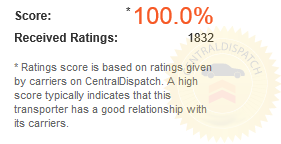Shipping electric or hybrid cars between Hawaii and the mainland involves unique considerations that differ from transporting conventional vehicles. As EV and hybrid ownership continues to grow, vehicle owners need specialized transport solutions that protect sophisticated battery systems and electrical components during ocean transit. Whether relocating to Hawaii, moving to the mainland, or purchasing an electric vehicle from overseas, understanding the shipping requirements for these vehicles ensures a smooth transport experience.
Electric and Hybrid Car Transport Requirements
Electric and hybrid vehicles present distinct shipping challenges due to their battery systems, complex electronics, and specific safety protocols. EVs often weigh 30% more than comparable gasoline models, requiring carriers with appropriate weight capacities and specialized securing methods. The high-voltage systems in these vehicles necessitate handling by experienced professionals who understand the unique properties of these advanced powertrains.
Safety Regulations and Battery Considerations
International maritime regulations classify lithium-ion batteries as potentially hazardous materials, though integrated vehicle battery systems typically qualify for less restrictive shipping categories. For overseas transport, EV batteries must maintain a specific charge level — usually between 30% and 50% — to minimize fire risk while ensuring sufficient power for loading and unloading operations. This differs from conventional vehicles, which must be shipped with minimal fuel.
Transport companies with experience in EV shipping implement specific safety protocols, including battery charge verification, specialized tie-down methods, and proper circuit isolation. For longer voyages or shipping through extreme climate zones, temperature-controlled options protect battery systems from degradation, as lithium-ion batteries are sensitive to prolonged exposure to very high or low temperatures.
Preparing Your Electric Vehicle for Ocean Transport
Properly preparing your vehicle before overseas shipping prevents potential issues during transit and ensures it arrives in optimal condition. Beyond standard preparation steps, EVs require specific attention to their electrical systems and battery components:
- Charge the battery to the recommended level (typically 30-50% for shipping)
- Disable all electronic systems including alarm, keyless entry, and connectivity features
- Document any existing damage with photos and notes
- Remove all personal items and charging cables (except built-in equipment)
- Clean the vehicle thoroughly inside and out to pass agricultural inspections
- Secure or remove any loose components specific to electric vehicles
- Obtain instructions from the manufacturer regarding transport recommendations
- Record all important vehicle codes and passwords you’ll need upon arrival
- Back up electronic vehicle data if your model offers this capability
- Consider disconnecting the 12V accessory battery if shipping for extended periods
Methods for Shipping Electric Cars Overseas
RoRo Transport vs. Container Shipping
When shipping electric vehicles overseas, you’ll typically choose between Roll-on/Roll-off (RoRo) transport and container shipping. RoRo transport involves driving your car directly onto specialized vessels designed for vehicle transport. This economical option is widely used for all types of vehicles shipping to and from Hawaii.
Container shipping places your vehicle in a steel container, offering maximum protection from elements and handling. This method is ideal for electric vehicles, as it shields sensitive electronic components and battery systems from salt air, moisture, and temperature fluctuations. Containers can be exclusive to your vehicle or shared with other cargo, with exclusive containers providing the highest protection at a premium price.
Door-to-Door vs. Port-to-Port Services
Car shipping companies offer service levels ranging from complete door-to-door service to more economical port-to-port options. Door-to-door service provides comprehensive pickup from your origin location and delivery to your final destination, eliminating the need to arrange transportation to and from port facilities. This premium service is valuable for EV owners unfamiliar with overseas shipping protocols or without means to transport their vehicles to distant ports.
Port-to-port service requires you to deliver your electric vehicle to the departure port and collect it at the destination port. While this reduces shipping costs, it necessitates arranging transportation at both ends of the journey.
Cost Factors in EV Transportation
The cost of car shipping depends on the make and model of your vehicle, battery type and size, shipping method, service level, insurance coverage, and seasonal demand fluctuations. Additional services like temperature-controlled containers, specialized EV handling, and expedited shipping will increase your total. Requesting quotes from multiple specialized electric vehicle shipping companies helps you understand current market rates for your specific requirements.
Choosing the Right Auto Transport Company
Evaluating Experience with EV and Hybrid Transport
When selecting a company to ship your electric vehicle overseas, prioritize transporters with specific experience handling alternative fuel vehicles. Ask potential shipping companies about their experience with your exact make and model, their understanding of EV battery protocols, and their specialized equipment for handling electric vehicles. Experienced transporters will readily discuss their battery safety measures, temperature management approaches, and secure tie-down methods designed for electric vehicles’ unique weight distribution.
Verifying Shipping Credentials
Legitimate Hawaii vehicle shippers must maintain proper credentials and registrations with governmental and industry organizations. When choosing a company to transport your electric vehicle to or from Hawaii, verify they possess a Federal Maritime Commission license and Department of Transportation registration. Companies serving Hawaii routes should also demonstrate compliance with Jones Act requirements for domestic maritime shipping.
Confirm the company’s compliance with maritime regulations regarding lithium-ion battery transport, including proper handling protocols for EV batteries during ocean crossings. Reputable Hawaii shipping companies will readily provide their license numbers and proof of specialized insurance coverage upon request, demonstrating their commitment to safety and regulatory compliance for your electric vehicle.
Checking Reviews and References
Before entrusting your electric vehicle to an auto shipping company, research their reputation through customer reviews and industry references. Look specifically for feedback from other electric or hybrid vehicle owners who have used their services, as these experiences most closely reflect what you can expect. Pay attention to reviews mentioning the condition of vehicles upon arrival, the company’s communication throughout the process, and their handling of EV-specific concerns.
Request references from the shipping company for previous electric vehicle transport journeys similar to yours, especially to the same overseas destination. Check the company’s rating with the Better Business Bureau and review complaints filed with the Federal Maritime Commission to identify any patterns of issues. This review process helps ensure you select a transport partner with proven expertise in handling sophisticated electric vehicles for overseas shipping.
Trust Hawaii Car Transport to Deliver Your Electric Vehicle
At Hawaii Car Transport, we’ve developed specialized expertise in shipping electric and hybrid vehicles between the mainland and Hawaii, with thousands of successful EV transports completed. Our team understands the unique requirements of major electric vehicle manufacturers, with customized handling protocols for each model. We provide service options ranging from economical port-to-port shipping to complete door-to-door delivery, with specialized container shipping available for high-value electric vehicles requiring maximum protection.
Ready to deliver your electric or hybrid vehicle overseas with confidence? Use our car shipping calculator to receive a free instant quote. Our transport specialists will guide you through the entire process and provide a detailed shipping plan tailored to your specific vehicle and requirements.
FAQ
What makes shipping an electric car overseas different from shipping a conventional vehicle?
Electric vehicles require specialized handling due to their battery systems, higher weight, and unique safety considerations. EV batteries must be maintained at specific charge levels during shipping, and international regulations classify lithium-ion batteries as potentially hazardous materials requiring specific documentation.
How should I prepare my electric vehicle’s battery for overseas shipping?
Charge your EV battery to the manufacturer’s recommended level for transport, typically between 30% and 50% of capacity. Consult your vehicle’s manual for model-specific recommendations, as some newer EVs have dedicated “shipping mode” settings that optimize battery systems for extended periods without charging.
Is container shipping or RoRo transport better for electric vehicles going overseas?
Container shipping provides superior protection for electric vehicles despite the higher cost. Containers shield sensitive electrical components and battery systems from environmental elements that could damage sophisticated EV systems, making it the preferred option for most electric vehicle overseas shipments.


